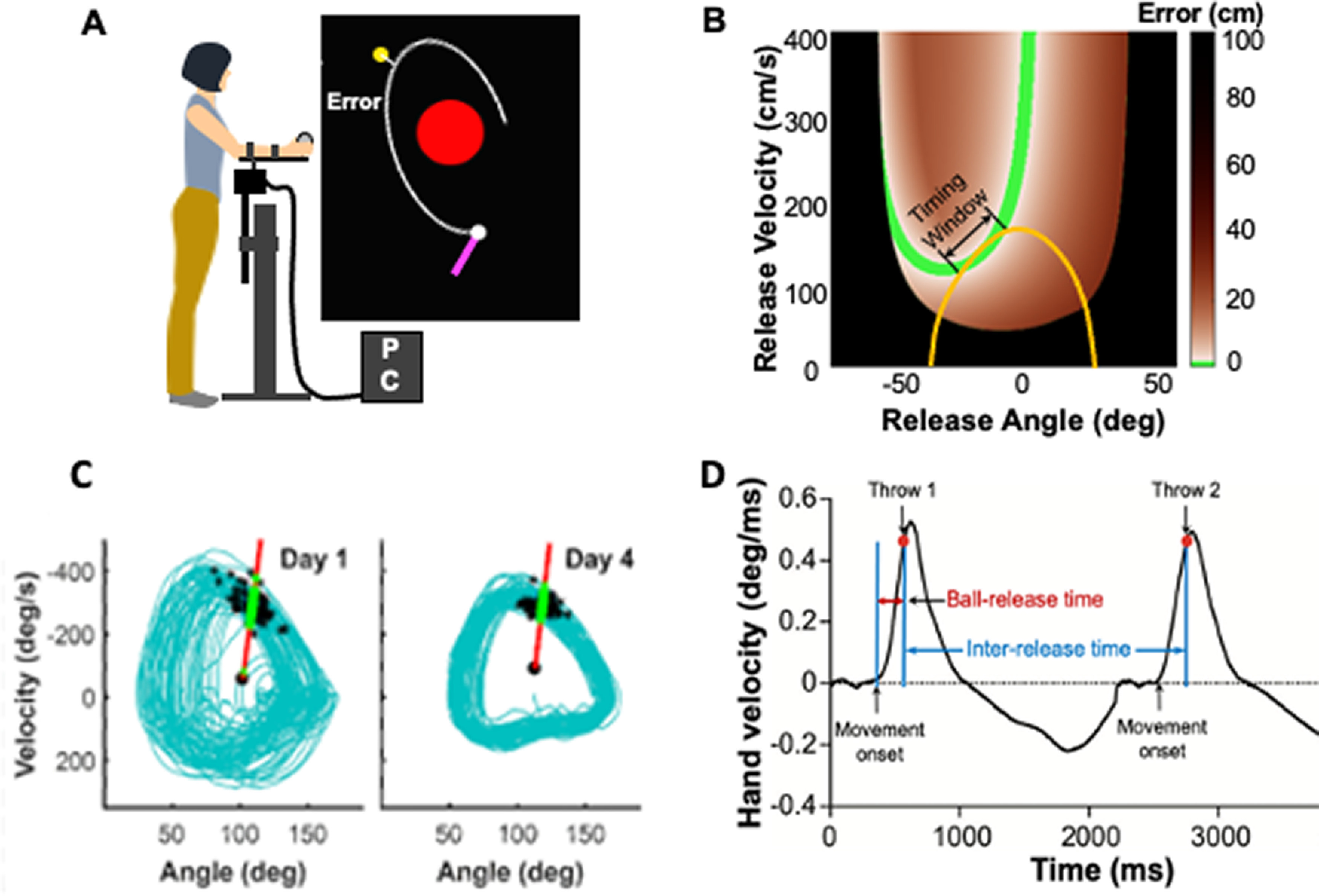Figure 2.

Simplified virtual throwing task. A, In the virtual task, the participant performs forearm movements via a manipulandum and throws a virtual ball to hit a target on the screen. The error is defined and calculated as the shortest distance that the ball trajectory achieves to the target. The time at which this closest distance occurs can differ between trials. B, The task has redundancy as infinitely many different ball releases (angle and velocity at ball release) can achieve a given error. The combinations of angle and velocity that achieve zero error define the solution manifold (green band). Orange line indicates an exemplary arm trajectory plotted in the same space. It closely aligns with the solution manifold where a “timing window” can be defined. Any ball release within this window achieves a zero-error target hit (Zhang et al., 2018). C, Continuous arm movements plotted in phase space spanned by position and velocity, display a closed orbit, indicating periodicity. With practice, successive throws develop a stable periodic pattern (from day 1 to day 4). Black dots indicate the ball releases. The variability of these trajectories significantly decreases from day 1 to day 4. Red line indicates a Poincare section, where the intersections of the arm trajectory are analyzed to test for stability (Zhang and Sternad, 2019). D, Velocity profile of two successive throwing movements illustrates different temporal intervals defined by kinematic landmarks. Red dot indicates the ball release time. The interval between the start of the movement to the ball release (∼300 ms) is most critical and positively affects interval perception.
